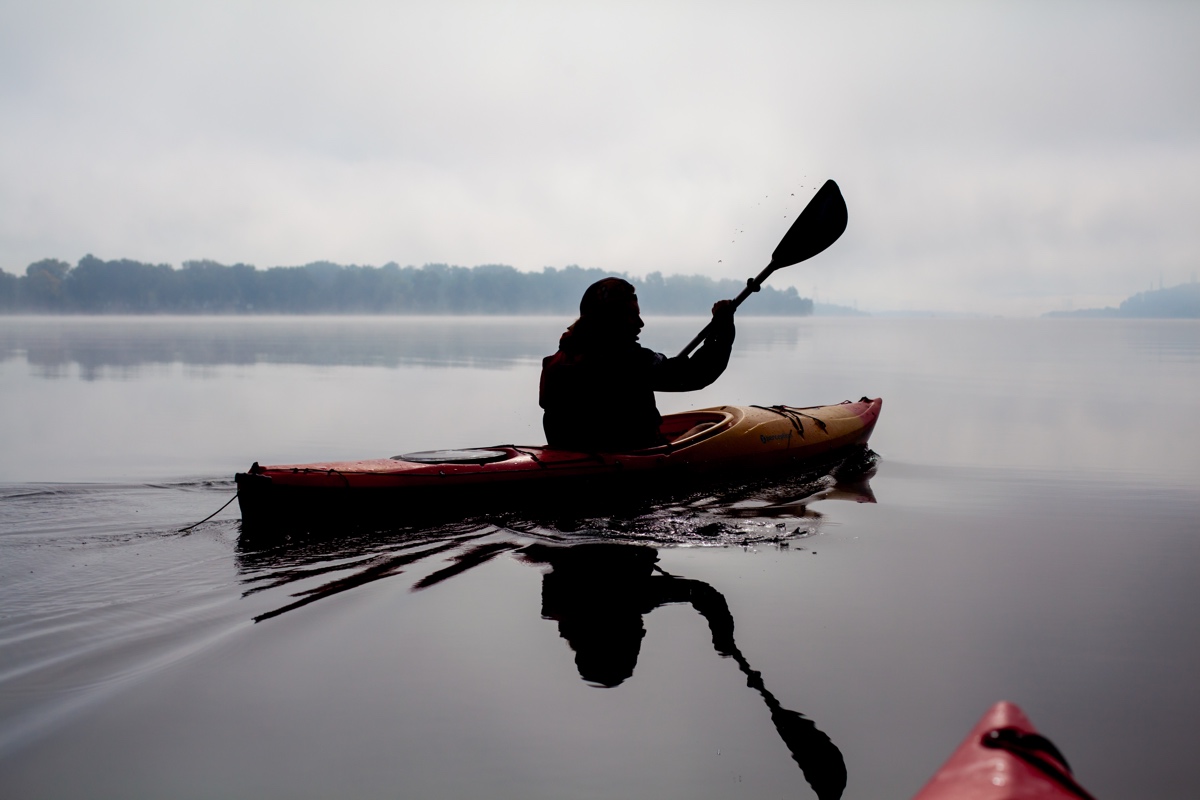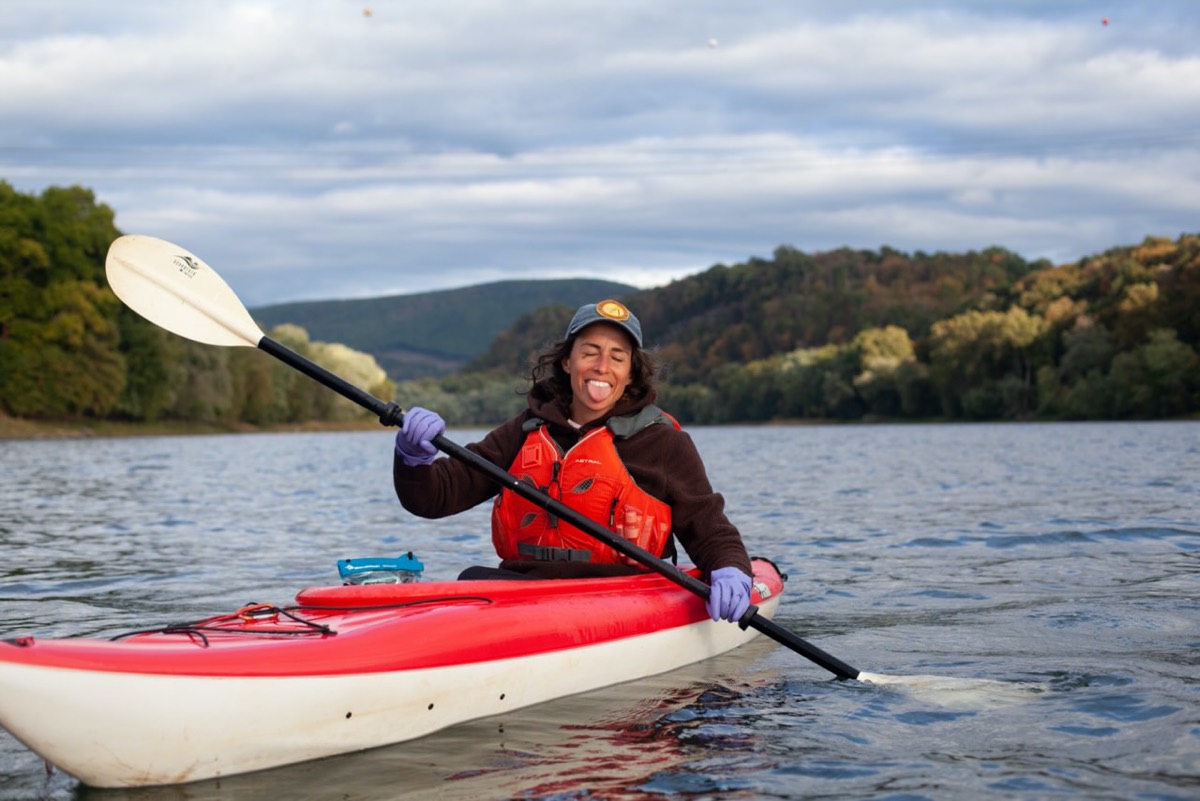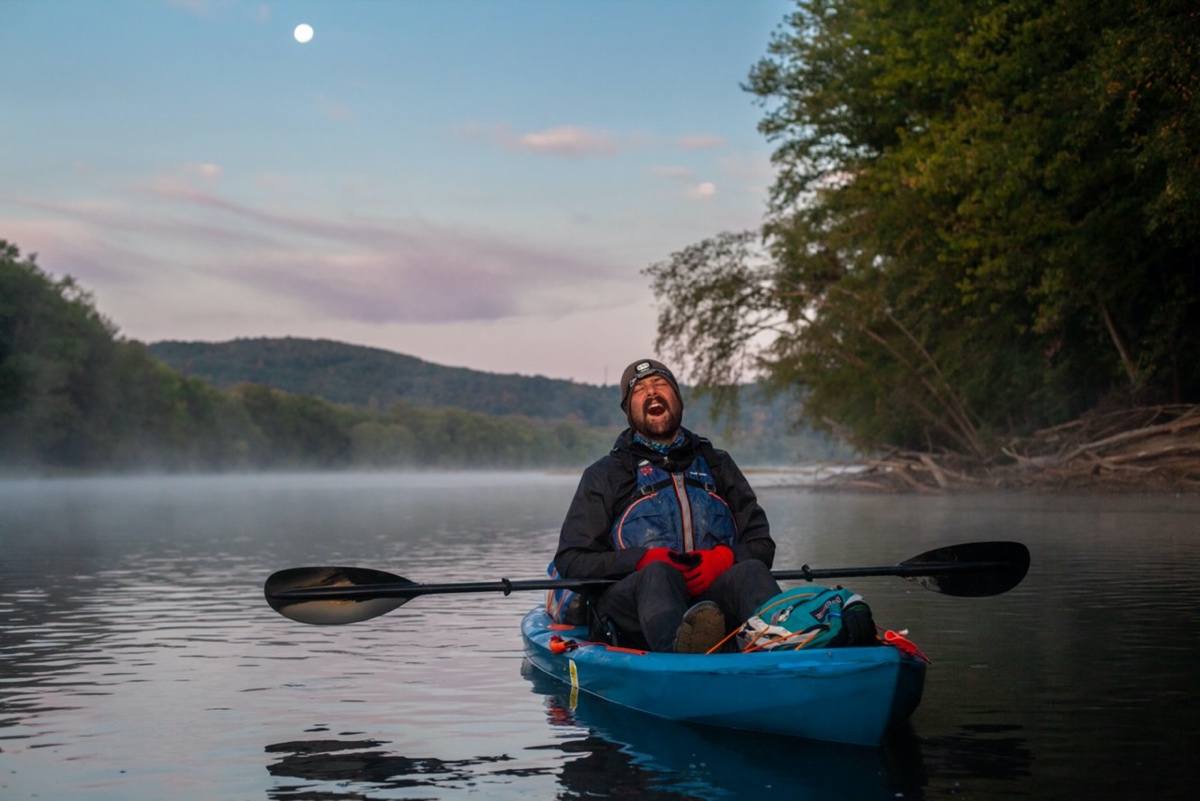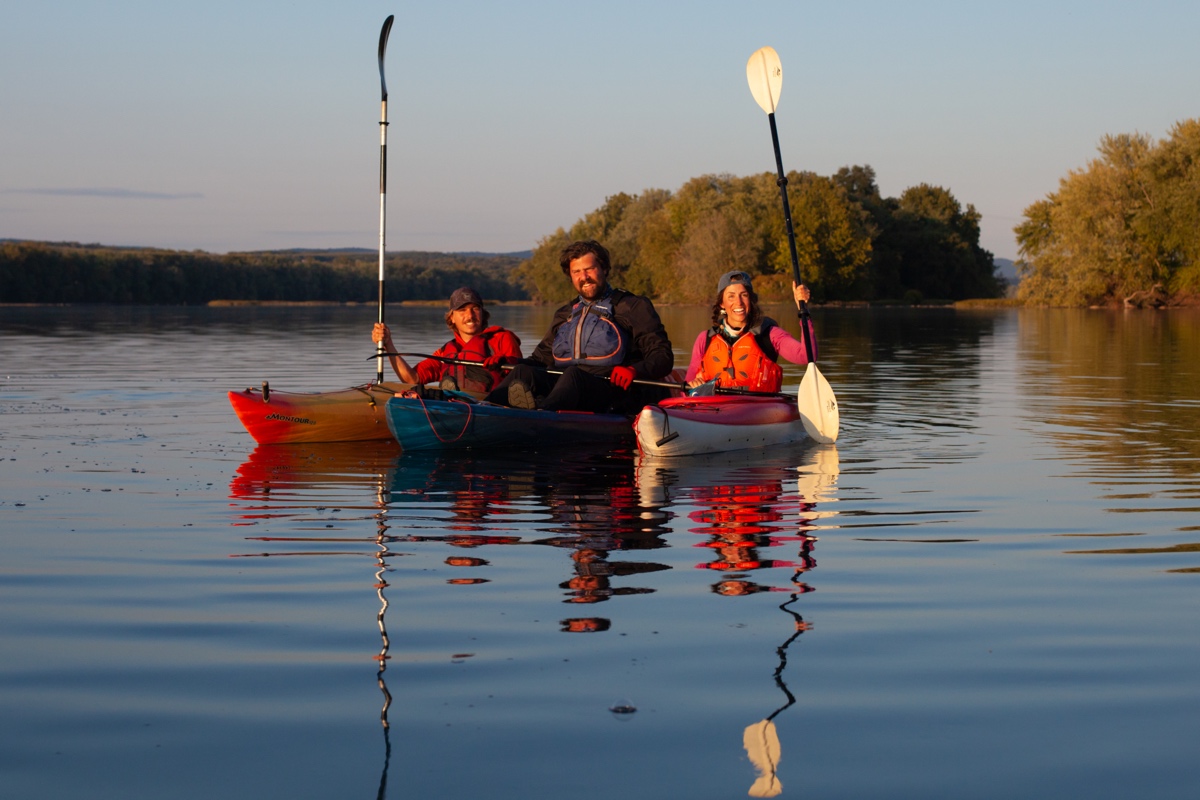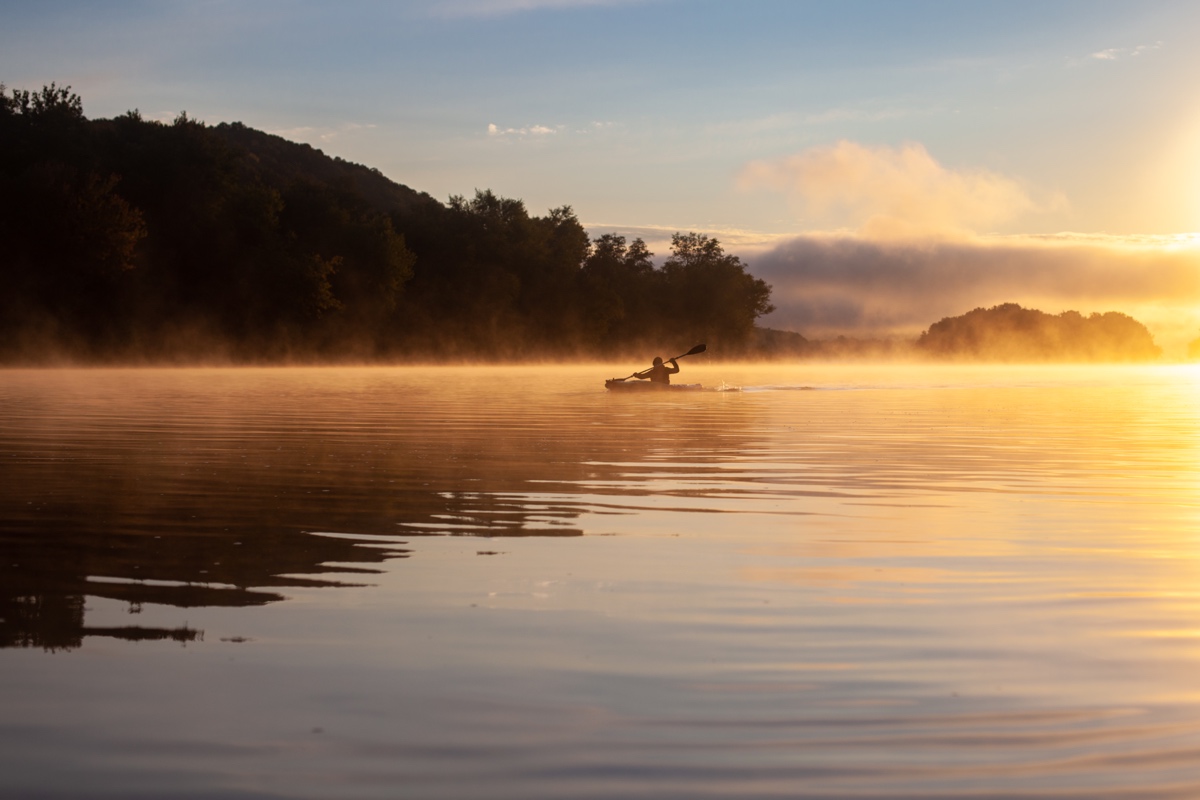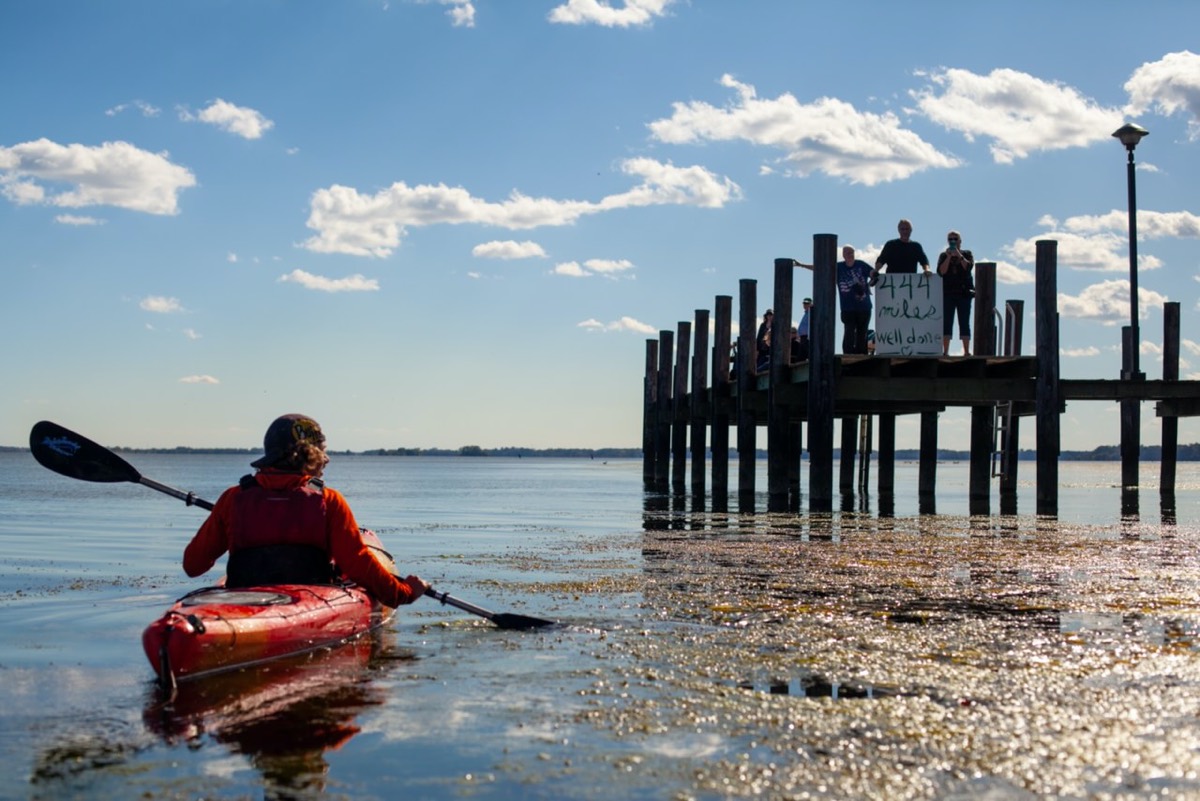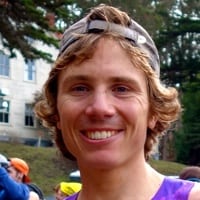We sat and ate dinner at the home of the Christiance family in rural New York, the very same activity we had done 18 days prior. That first time, we were one day deep into a 444-mile kayak trip down the entire length of the longest river on the United States’s East Coast, the Susquehanna River. This time, we were finished. At dinner one, we were looking forward, and at two, we were looking back. Same river, same trip, yet drastically different perspectives.
As I sat there on that final night, the length of the river behind me, I asked Mr. Christiance if most people in the area knew where the river ended. He said that he thought they did. It was his daughter Michelle, my buddy Joel, and I who had together made this 18-day trip. Michelle grew up here just south of Otsego Lake in New York, the headwaters of the Susquehanna. In contrast, Joel and I both grew up in Pennsylvania, each of us not far from the banks of the river and relatively close to its terminus at the Chesapeake Bay in Havre de Grace, Maryland.
I thought of the river from our perspective, and explained to Mr. Christiance that I felt like a lot of people back at my home probably know that the river ends at the bay, but I wasn’t so sure that very many know where it begins. I expressed the idea that people know a river more for where it flows to rather than where it comes from. I had nothing to prove my thought, but it somehow made sense from my lifetime of downriver perspective.
The next morning, I got in my truck and drove home. In less than five hours, I traveled nearly the entire length of the river, from its beginning to end. What had taken us 18 days by kayak was driven in less than a day. On one hand, it’s deflating. On the other, it’s quite special to realize that you took the time to really see a place, to slow down and drift through it. Once again, it was a matter of perspective. The entire trip had been this way.
On day one, we drove through thick fog to the river’s beginning in Cooperstown, New York. I guided my truck with extra care as I struggled to see what lay before me. Once in Cooperstown, I dropped off Joel, Michelle’s sister Kacey who was joining us for the day, and two kayaks. With everything unloaded, I then drove to the Christiance household where I would leave my truck and catch a ride back to the lake with Michelle and Mrs. Christiance. As I drove, I lifted above the clouds and caught a glimpse of the rising sun. The fog in which I had been shrouded just minutes before was now a beautiful sea of clouds beneath me.
Once at the house, I parked my truck and headed back to the lake. Standing at the edge of the water that morning felt surreal. Nearly all of my life I had lived just three miles from the banks of this river. I ran beside it, waterskied across it, swam within it, and gazed upon it. And yet, never had I laid eyes on its source. To finally see it, slide my kayak into its waters, and dip my paddle beneath its surface, that was something special.
In the days ahead, there would be many perspectives. Almost immediately there was the realization that water levels were very low. We paddled when we could and walked when we couldn’t. There was much more of the latter than desired. Our pace was slow and we questioned whether or not we’d finish on time. On day four, Joel contemplated how he could quit without losing too much face. In the end, he couldn’t come up with anything, so he just kept going. Still struggling, eventually I explained to the team that the finish line is where you set your mind. I said we would have to either paddle faster or longer, but we couldn’t afford to keep falling behind. We’d need to set a goal each day and make sure we reached it. And just like that, we took the threat of failure and turned it into an achievable goal.
This turn of the tables was a bit like the river itself. So many times in life, I had found myself looking down upon the water from a rock, bridge, or trail. Not often did I spend time looking up from its surface. Floating in the water, I felt like we looked up at everything. Houses, bridges, and roads all rested above us. I paid special attention to the flora and fauna above me: a tree standing tall on a hillside, eagles with their wings outstretched, flocks of ducks, gaggles of geese, and even a turkey spread its wings and soared before me.
The river teemed with life and save for the critters beneath the surface, we were at the bottom. It was a strange way to exist. Yet, it felt good to see things in this way. It enabled me to notice things that I might have missed otherwise. This was especially evident when it came to the behavior of the water itself. It was not simply a mass of water flowing north to south. Although that was the general direction in which it traveled, its flow was quite dynamic. There were deep spots and shallow spots, pebble bars and boulders, headwinds and tailwinds, fast-moving rapids and water as smooth as glass. The river changed constantly and the more we paid attention to it, the more we learned.
It was fun to begin to understand how to look at the river and interpret the clues it was giving. Still, it was a work in progress, and oftentimes it felt more like an educated guess. But hey, better educated than completely blind. Though our navigational choices were not always on point, one idea became clear. The river was not so much something to be defeated, as it was something to be worked with. If we wanted to run the river efficiently, we needed to flow with it. Doing so allowed us to ride swifter currents, steer clear of nasty pebble bars, and avoid dangerous rocks.
It’s now been a week since we left the river, but the lessons we learned still ring true. So many times in life our perspective is to conquer something. In running, it is often the same. We long to set a fastest known time, beat our PR, or win a race. Yes, I am a fan of chasing all of these things. But if we chase only these things, I think we limit what running can be. How might your running look differently if you were to change your perspective from competing to simply enjoying and vice versa? Or, from bettering yourself to bettering those around you? What if you stopped paying money to run and started running to raise money for a cause or to bring attention to an important social issue? What if you volunteered your time at a race instead of racing the clock yourself? Much like a river, there are so many paths that running can take. To view it from a single perspective would be to miss out. It would be like setting your eyes only on the end point, but never thinking of the source.
I like to think that we learned a lot by the time we paddled our way into the Chesapeake Bay that final day. Not that we are professionals by any means, but perhaps we had paid attention and finished wiser than we started. Whether with running, work, hobbies, relationships, or something else, I hope that we can choose to look at things from various perspectives. What can we see if we look at the river from the banks, bridges, roads, and the surface itself? The more ways we look at something, the more we can learn, and the more we learn, the more astute our navigation.
Call for Comments
- Has there been a place or experience either in running, another adventure, or somewhere in life that has offered you the opportunity of seeing the world from multiple perspectives?
- Can you share a little about those new perspectives?
